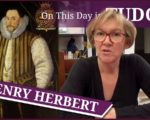
On this day in Tudor history, 19th January 1601, Henry Herbert, 2nd Earl of Pembroke, died at Wilton, the family home near Salisbury.
Who was Henry Herbert?
Let me tell you about this interesting Tudor man in today’s talk.
[Read More...]
On this day in Tudor history, 19th January 1601, Henry Herbert, 2nd Earl of Pembroke, died at Wilton, the family home near Salisbury.
Who was Henry Herbert?
Let me tell you about this interesting Tudor man in today’s talk.
[Read More...]
Happy Epiphany! Happy Kings’ Day! Yes, today is the Feast of the Epiphany, the day that commemorated the visit of the Magi to the Christ Child.
Following on from yesterday’s Teasel’s Tudor Trivia about Epiphany Eve and Twelfth Night Cake, I thought I’d share with you some examples of how Epiphany was celebrated at the royal court. Find out what those Tudor people got up to on Twelfth Night in today’s talk.
[Read More...]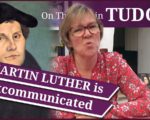
On this day in Tudor history, 3rd January 1521, Pope Leo X excommunicated Reformer, German priest and professor of theology Martin Luther from the Catholic Church.
In today’s talk, I explain what led to Luther’s excommunication, what happened when Luther was called to the Diet of Worms, and what happened next to this famous Reformer.
[Read More...]
On this day in Tudor history, Wednesday 4th October 1536, trouble erupted in Horncastle, Lincolnshire. This was part of what we know as the Lincolnshire Rising which, in turn, was part of the famous Pilgrimage of Grace rebellion.
In today’s talk, I share exactly what happened in Horncastle, which included two murders, what the rebellion was all about, and how King Henry VIII responded to the rebel’s grievances. I read King Henry VIII’s own words to the rebels of the Pilgrimage of Grace.
[Read More...]
On this day in Tudor history, 20th September 1486, King Henry VII’s wife, Elizabeth of York, gave birth to the couple’s first child at Winchester.
The baby was a boy and was baptised Arthur, named after the legendary King Arthur. There were high hopes for this boy and King Henry VII believed that his firstborn would be a powerful king who would bring a golden age to the country. Of course, things wouldn’t go according to plan.
Find out more about Arthur Tudor, Prince of Wales, who was, of course, Catherine of Aragon’s first husband, in today’s talk from Claire Ridgway, founder of the Tudor Society.
[Read More...]
As usual, we have two live chats this month, an informal one and a Q&A session with our expert speaker, Sarah Morris.
Both chats will take place in the Tudor Society chatroom. They wll last an hour.
Our informal live chat is on Tudor childhood and will take place on Saturday 24th August. The idea of the informal live chats is for members to dive in with their comments, opinions, book recommendations etc. and to pose questions to each other on the topic. Anything that is topic-related. Claire attends to moderate, and to take part too. We can talk about childhood, education, upbringing, children in different classes, toys, all sorts!
[Read More...]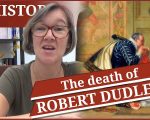
On this day in Tudor history, 4th September 1588, Robert Dudley, Earl of Leicester, died at Cornbury while on his way to Buxton to take the waters for his health.
The death of her favourite, and the man that is considered to be her ‘true love’, was a devastating blow to Elizabeth I and her reaction to the news shows just how much she loved her “sweet Robin”.
Leicester wrote to his queen just days before his death and “His Last Letter” was something that Elizabeth I treasured for the rest of her life.
Find out more about Leicester’s death, his last letter and Elizabeth’s grief in today’s video.
[Read More...]

On this day in Tudor history, 16th August 1513, the Battle of Spurs took place at Guinegate, or Enguinegatte, in France.
It actually wasn’t a pitched battle at all, as the French knights fled the scene, but that didn’t stop Henry VIII claiming victory and doing a bit of exaggerating.
I explain what exactly happened on this day in 1513 in today’s talk.
[Read More...]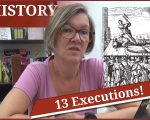
Yes, you read that correctly! On this day in Tudor history, 4th August 1540, thirteen men were executed in London – 12 by being hanged, drawn and quartered, and one by being hanged. Awful!
In today’s talk, I explain who these 13 men were and why they were attainted by Parliament and executed.
[Read More...]
July’s 66 Page FULL-COLOUR Tudor Life magazine is focused on Medicine and Health during the Tudor period but as always, our contributors have gone far wider than that with their articles. Enjoy!
[Read More...]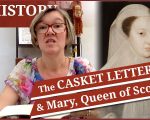
On this day in Tudor history, 20th June 1567, a silver casket of eight letters, which have become known as the Casket Letters, were allegedly found in the possession of James Hepburn, Earl of Bothwell, the third husband of Mary, Queen of Scots.
These letters were instrumental in bringing down Mary, Queen of Scots, so in today’s video, I tell you a bit more about these letters and why they were “dynamite” for Elizabeth I’s advisors.
[Read More...]
On this day in Tudor history, 1st May 1517, foreign traders in London had their shops and property vandalised and damaged by a mob of angry apprentices and labourers.
What sparked off this “Evil May Day Riot”? What happened to the troublemakers? And how did Queen Catherine of Aragon and Henry VIII’s sisters, Margaret and Mary, get involved? Let me explain…
[Read More...]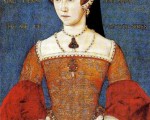
Happy Birthday to Queen Mary I! Yes, Mary I, a woman who has unfortunately gone down in history as “Bloody Mary” and whose reign is often seen as a failure, was born on this day in 1516.
In today’s video,I talk about Mary I’s birth and baptism and share some of Mary I’s achievements as queen. She’s so much more than Bloody Mary.
[Read More...]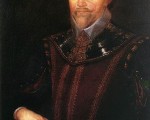
Sir Francis Drake died on this day in Tudor history in 1596, but who was he? I share some Francis Drake facts and two legends that surround this colourful man.
[Read More...]
This month’s Tudor Life Magazine focuses on Tudor documents and sources. Our regular writers and guests have come up with another wonderful Tudor-packed magazine. And who knows, in 500 years time, Tudor Life magazine will also be a great historical document!
[Read More...]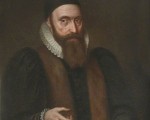
24th December:
1545 – King Henry VIII made his final speech to Parliament. Historian Robert Hutchinson describes it as “both measured and compelling”, and writes of how Henry wanted “to impart a stern message” to all of his subjects.
1604 – Death of Sir Thomas Cornwallis, Comptroller of the household of Mary I and member of Parliament, at the age of eighty-six. He was buried at Brome in Suffolk. Cornwallis was active in putting down Kett’s Rebellion in 1549 and in 1553, after originally proclaiming Lady Jane Grey as Queen in Ipswich, he swapped sides and swore allegiance to Mary I.

In this month’s stunning 98 page edition of Tudor Life magazine, we cover the reputation of Mary I and whether she deserves the title “Bloody Mary”. In this edition, we look into the lives of some of the martyrs …
[Read More...]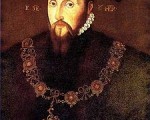
1st October:
1500 – Death of John Alcock, Bishop of Ely, scholar and Royal Tutor, at Wisbech Castle. He was buried at Ely Cathedral, in the chantry chapel he had designed. Alcock had acted as tutor to Prince Edward, son of Edward IV, and had also been president of the Prince’s Council at Ludlow. He was also Henry VII’s first Chancellor and opened his first Parliament.
1505 – Death of Sir Henry Colet, merchant and Lord Mayor of London, at Stepney. He was buried there.
1526 – Birth of Dorothy Stafford, Lady Stafford, daughter of Henry Stafford, 10th Baron Stafford, and his wife, Ursula (née Pole). Dorothy married Sir William Stafford, widower of Mary Boleyn, in 1545. She served Elizabeth I as a gentlewoman of the Privy Chamber.
1553 – Mary I was crowned Queen at Westminster Abbey by Stephen Gardiner, the Bishop of Winchester.
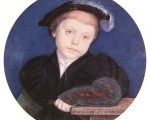
17th September:
1558 – Death of Walter Devereux, 1st Viscount Hereford, at the Devereux seat at Chartley in Staffordshire. He was buried in Stowe church. Devereux served Henry VIII as joint Constable of Warwick Castle, as a member of the jury at the trial of Edward Stafford, Duke of Buckingham, in 1521, in the government of the Welsh Marches, as Steward in Princess Mary’s household at Ludlow and Chamberlain of the Court of General Surveyors. He also served Edward VI as a Privy Councillor.
1563 – Death of Henry Manners, 2nd Earl of Rutland, courtier and soldier, during an outbreak of the plague. He was buried at Bottesford parish church in Leicestershire. Manners served Edward VI as Warden of the East and Middle Marches on the Scottish borders, joint Lord Lieutenant of Lincolnshire and Nottinghamshire, and Lord Lieutenant of Nottinghamshire. He was imprisoned when Mary I came to the throne for his support of John Dudley, Duke of Northumberland, but was released into house arrest and then pardoned. He served Mary I as Captain-General of Horsemen and Lieutenant and Captain-General in Calais. During Elizabeth I’s reign, he served as Lord Lieutenant of Nottinghamshire and Rutland, and President of the Council of the North.
1575 – Death of Heinrich (Henry) Bullinger, the Swiss reformer and theologian, in Zurich. Bullinger succeeded Huldrych Zwingli as pastor at Grossmünster and head of the church in Zurich. His main work was “The Decades”, a theological work, but his sermons were also translated and published, and he wrote historical works.
1577 – The Edict of Poitiers ratified the Treaty of Bergerac, which had been signed between Henry III of France and the Huguenot princes.
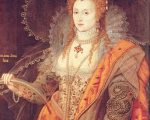
3rd September:
1553 – Edward Courtenay was created Earl of Devon. He had been imprisoned in 1538, at the age of twelve, due to his family’s links with the Poles and Nevilles, but was released shortly after the accession of Mary I.
1557 – News reached London that the English and Imperial troops had been successful in storming St Quentin, and there were widespread celebrations; bonfires were lit, bells were rung and there was singing. The good news was marred, however, by news of the death of Henry Dudley.
1588 (3rd or 5th September) – Death of Richard Tarlton, actor and famous clown, in Shoreditch. He was buried in St Leonard’s Church, Shoreditch. Tarlton was a member of the Queen’s Men, but is famed for his post-play jigs as a clown.
1592 – Death of writer and playwright Robert Greene in Dowgate. He died from a fever and was buried in a churchyard near Bedlam. Greene was a prolific writer, writing autobiographical works, plays and romances, but is best known for his pamphlet “Greene’s Groats-worth of Wit bought with a Million of Repentance”, which is the first contemporary reference to William Shakespeare. It was actually an attack on Shakespeare, whom Greene accused of plagiarism, and of being uneducated.
1597 – Death of Sir John Norreys (Norris), military commander, at his brother Thomas’s home, Norris Castle in Mallow, co. Cork. He died in his brother’s arms, and it is thought that his death was due to trouble from old wounds, perhaps gangrene. Norris served as a soldier in France, the Low Countries and Ireland.
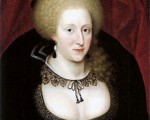
20th August:
1509 – Birth of Sir William Stanford (Staunford), judge and legal writer. Stanford served Mary I as one of her queen’s Sergeants, and is known for his legal books, “Les plees del coron” (1557), on criminal law, and “Exposicion of the Kinges Prerogative” (1567)
1580 – Death of Sir George Bowes, soldier and administrator, at Streatlam, county Durham. He was buried in the family vault at Barnard Castle Church. Bowes served Elizabeth I as a member of the Council of the North and the Ecclesiastical High Commission for York, a Justice of the Peace and Sheriff, and as the Earl of Sussex’s Deputy in co. Durham and Richmondshire, and Provost Marshal. Bowes was also chosen to escort Mary, Queen of Scots from Carlisle to Bolton Castle in 1568.
1588 – A thanksgiving service was held at St Paul’s in London to give thanks to God for England’s victory over the Spaniards.
1589 – Marriage of James VI of Scotland and Anne of Denmark, second daughter of King Frederick II of Denmark, by proxy at Kronborg Castle, Helsingør, Denmark. James was represented by his ambassador at the Danish court, George Keith, 5th Earl Marischal.
1599 – Death of Sir Thomas Norris, soldier and Lord President of Munster, at his house at Mallow, County Cork, Ireland. Norris died from an injury to his jaw sustained in a skirmish with Thomas Burke and his troops in May 1599.
1610 – Death of courtier Edmund Tilney, censor of plays and Master of the Revels. He was buried in St. Leonard’s Church, Streatham, London.
1648 (or 5th August) – Death of Edward Herbert, 1st Baron Herbert of Cherbury and 1st Baron Herbert of Castle Island, diplomat, philosopher and the author of “The Life and Raigne of King Henry the Eighth”. He was buried at St Giles-in-the-Fields, London.

13 August:
1514 – Princess Mary Tudor, sister of Henry VIII, married King Louis XII by proxy at Greenwich Palace. Mary was present at the ceremony, but the Duke of Longueville stood in for the groom.
1566 – Death of Sir Humphrey Radcliffe, member of Parliament, at his manor of Elstow. He was buried in Elstow Church. Radcliffe served as a member of Parliament during the reigns of Mary I and Elizabeth I, and then as a JP and Sheriff in Elizabeth I’s reign.
1568 – Death of William Barlow, Bishop of Chichester. He was buried in Chichester Cathedral.
1579 – Executions of Roman Catholic martyrs Friar Conn O’Rourke and Patrick O’Healy, Bishop of Mayo. They were hanged just outside Kilmallock, co. Limerick. O’Healy was tortured before his death, by having spikes driven through his hands, in the hope that he would give Sir William Drury, Lord President of Munster, details on James fitz Maurice Fitzgerald’s plans to lead a Catholic crusade to Ireland. He would not talk. O’Healy was beatified in 1992.
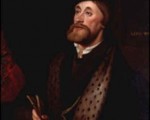
30 July:
1540 – Executions of Catholic martyrs Thomas Abell, Edward Powell and Richard Fetherston for refusing to acknowledge the royal supremacy. They were hanged, drawn and quartered at Smithfield. Click here for more information.
1540 – Burnings of religious reformers Robert Barnes, William Jerome and Thomas Garrard at Smithfield for heresy.
1550 – Death of Thomas Wriothesley, 1st Earl of Southampton, at Lincoln House in Holborn. He was buried in St Andrew’s Church, Holborn, but then moved later to Titchfield. Wriothesley served Henry VIII as Lord Privy Seal and Lord Chancellor. Click here to read more about him.
1553 – Princess Elizabeth left her new home, Somerset House, to ride to Wanstead and greet her half-sister, Mary, England’s new queen. Click here to read more.
1563 – Birth of Robert Parry, writer and diarist, at Tywysog in Denbighshire, North Wales. His works included “Moderatus: the most Delectable and Famous Historie of the Black Knight”.
1570 – Burial of Sir William Godolphin, soldier, at Breage.
1588 – The wind changed and the remaining ships of the Spanish Armada were forced northwards and scattered. The wind became known as the “Protestant wind” because people believed that God had sent this wind to protect England from the Catholic Spanish Armada. Later, when it was obvious that the Spanish Armada had been defeated, medals were struck to celebrate and these medals were inscribed with “Flavit Jehovah et Dissipati Sunt“, meaning “Jehovah blew with His wind and they were scattered”. The wind certainly helped the English fleet.

In this month’s Tudor Life magazine we are focussing on the wide-ranging impact of the Tudors on religion. It was a time of great upheaval throughout the country and we look into some of the major changes that took place during the Tudor period.
[Read More...]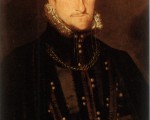
23 July:
1543 – Mary of Guise and her daughter, Mary, Queen of Scots, escaped from Linlithgow Palace, where they were being watched, to Stirling Castle. They were helped by Cardinal Beaton.
1563 – Death of Cuthbert Vaughan, soldier and Muster-Master and Comptroller of the English garrison at Newhaven (actually Le Havre), from the plague.
1584 – Death of John Day, Protestant printer, bookseller and publisher of John Foxe’s “Actes and Monuments” (“Book of Martyrs”), at Walden in Essex. He was buried at Little Bradley parish church in Suffolk.
1596 – Death of Henry Carey, 1st Baron Hunsdon, Privy Councillor and Lord Chamberlain, at Somerset House. Hunsdon was the son of William Carey and his wife, Mary Boleyn, sister of Anne Boleyn. Mary was mistress to Henry VIII at some point in the 1520s, and some people believe it is possible that Hunsdon was actually fathered by the King.
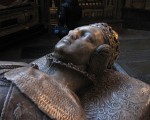
Frances (née Brandon) was the eldest daughter of Charles Brandon, Duke of Suffolk, and his third wife, Mary Tudor, sister of Henry VIII and widow of Louis XII of France. It is worth examining Frances’s parents and their significance within Tudor society before moving onto her life. Her father was an extraordinary character: magnate, courtier, and soldier, he exemplified the ideal qualities associated with being a male sixteenth-century courtier. Having been a close confidant to Henry VIII throughout his childhood, Suffolk found military fame in 1512 as a result of his involvement with the Anglo-French war. This war led to a successful siege of the French town of Tournai, with the inhabitants essentially forced to surrender to the invasion of the English king. As a result, Henry passed the keys of the city to Suffolk as a result of his honour and bravery.
[Read More...]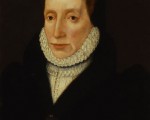
18th June:
1529 – Opening of the Legatine Court at Blackfriars to hear the case for the proposed annulment of Henry VIII’s marriage to Catherine of Aragon.
1546 – Anne Askew was arraigned at London’s Guildhall for heresy, along with Nicholas Shaxton, Nicholas White and John Hadlam (Adlams or Adams). She was sentenced to be burned at the stake.
1558 – Proving of the will of Robert Recorde, Welsh mathematician and physician. His date of death is not known, but is thought to have been mid June 1558. He is known for introducing the “equal to” sign, i.e. “=”. He published several mathematical works.
1588 – Death of Robert Crowley, Protestant printer, author, poet and Church of England clergyman. He was buried in the chancel of St Giles Cripplegate under the same stone as his great friend martyrologist, John Foxe.
1592 – Death of Francis Wyndham, Judge, at the Committee House, St Peter Mancroft, Norwich. His trials included the treason trials of John Somerville and William Parry in the 1580s, and his legal knowledge led to him being approached for advice on Mary, Queen of Scots.
1616 – Death of Thomas Bilson, Bishop of Winchester, at Westminster. He was buried at Westminster Abbey.